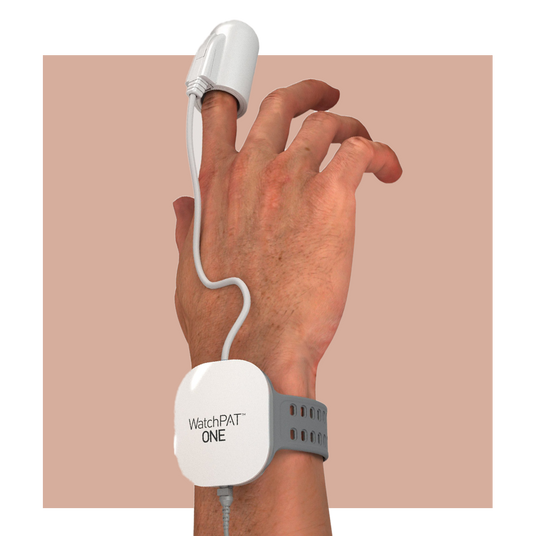Making Sleep Testing Easy.
Get Started Today
Next-Gen Solutions for At-Home Testing.
With the easy-to-use, Health Canada-approved WatchPAT™ One from Itamar Medical, you can get a comprehensive overview of your sleep health in a single night
The WatchPAT Sleep Test Is Everything You Need.
Product Description
Product Description
- The WatchPAT™ One is a Health Canada approved portable sleep apnea diagnostic device. Its cutting-edge technology guarantees accurate sleep apnea screening, detection, and follow-up therapy.
- Measures sleep apnea accurately using seven separate factors: actigraphy (gross motor activity), heart rate, oximetry (blood oxygen level), PAT signal (peripheral arterial tone), body posture, snoring, and chest motion.
- Determines central sleep apnea, real sleep time, and sleep architecture.
- Validated against standard polysomnography (PSG)
- Download the WatchPAT™ One app on Google Play or Apple App Store for instructions about how to apply the sensors.
Tailored for Comfort
Tailored for Comfort
- The portable monitoring gadget is designed to fit on a wrist.
- The wrist, finger, and neck are the three points of contact.
- No need for an unpleasant body strap or nasal tube.
- Finish the sleep test in a single sleep night.
Who's It For?
Who's It For?
Individuals with undiagnosed sleep apnea who don’t want to spend the night away from home in a sleep lab for overnight monitoring.
Adults who are at least eighteen years old.
Anyone with sleep apnea who exhibits these unexplained symptoms:
- Snoring
- Breathing pauses when sleeping
- Agitated sleep
- Headaches in the morning
- Dry mouth
- Frequent wake-ups
- Memory impairment
- chronic fatigue
- Anxiety
- Depression
- Drowsy during the day
What's Included
What's Included
- WatchPAT™ One wrist-worn device
- WatchPAT™ One chest sensor
- WatchPAT™ One finger probe
Specifications
Specifications
- Tests For: Obstructive sleep apnea (OSA)
- Accuracy: WatchPAT™ One is clinically validated with an 89% correlation to PSG5.
- Success Rate: 98% success. A less than 2% rate of failure can occur during data acquisition and analysis.




